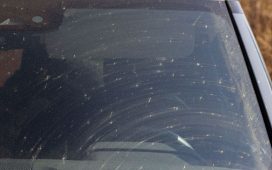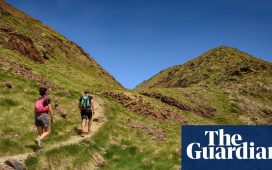An extremely rare, carved wooden figure from the early Roman era has been unearthed in a waterlogged ditch in Buckinghamshire, the latest extraordinary find in the UK’s biggest ever archaeological dig along the 150-mile HS2 rail route.
The 67cm-tall figure is carved from a single piece of wood. Archaeologists said its preservation was “incredible” given its age and material, but the lack of oxygen in the ditch helped prevent rotting over many centuries.
“This is a truly remarkable find which brings us face to face with our past. The quality of the carving is exquisite and the figure is all the more exciting because organic objects from this period rarely survive,” said Jim Williams, a senior science adviser for Historic England.
The figure, found in a field near Twyford, is wearing a knee-length tunic that seems to be gathered at the waist. It may be wearing a hat, or have styled hair, and has well-defined legs, although the feet and the arms below the elbows have degraded.
More than 1,000 archaeologists have been working on at least 60 separate sites along the HS2 phase one route between London and Birmingham since autumn 2018. Experts have said the project is a once-in-a-generation opportunity to shed light on 10,000 years of history.
The route was initially mapped by laser scanning and geophysical surveys before digs began. Archaeological investigation is a legally binding condition of the HS2 project, and is funded as part of the overall budget, estimated in 2019 at £45bn for phase one.

Among the finds ranging from the iron age to the Victorian era is the discovery revealed earlier this week of a vast Roman settlement in Northamptonshire, 16th-century gardens in Warwickshire, the world’s oldest railway roundhouse in Birmingham, a trio of Roman statues at an abandoned medieval church in Buckinghamshire, and tens of thousands of skeletons at various burial grounds.
“The scale of the HS2 project is unprecedented, so it’s not surprising that spectacular discoveries have been made,” said Mike Pitts, editor of British Archaeology. “It’s the fruits of Britain’s thousands of years of continuous occupation and our skilled archaeological workforce.”
Alice Roberts, presenter of the BBC programme Digging for Britain, said the “extraordinary finds” along the HS2 route showed how rich the archaeological landscape of the country was. “This is the biggest archaeological investigation we’ve ever seen in Britain and you can’t overstate the importance of it,” she said.
Objects that have been unearthed will be preserved and many will eventually be displayed in museums. But larger finds, such as the 10 metre-wide Roman road in Northamptonshire, will be bulldozed to make way for HS2.
Helen Wass, HS2’s head of heritage, said: “Archaeology is a double-edged sword. We wouldn’t be doing it if construction wasn’t happening. You can’t have one without the other. We make sure that if construction happens, we record our heritage to the best of our ability.”
The cost of the HS2 archaeological work is built into the project’s overall budget, but Wass declined to say how much it had cost so far. Fieldwork on phase one is expected to be completed by the end of 2022, but post-excavation analysis will take several more years, she said.
The carved wooden figure was “a fantastic find”, said Pitt. “It’s really rare to get Roman carved woodwork in Britain. Even in its fractured, weathered state, it has something in the pose of the figure and in the dress that says this is probably Roman.”
The figure will undergo analysis and conservation at York Archaeology. A fragment that was found broken off in the ditch will be radiocarbon-dated to establish an accurate date for the wood.








